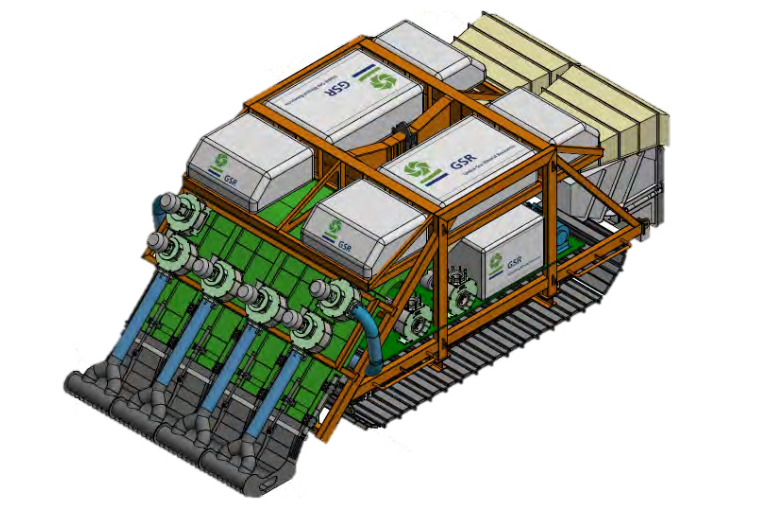GSR recently published the complete “prior” Environmental Impact Statement (EIS) related to the exploration mission of its ‘Patania II’ pre-prototype seafloor nodules mining vehicle in 2019. After its predecessor ‘Patania I’ was successfully tested at 4,500 m water depth in the Clarion Clipperton Fracture Zone in 2017, GSR was able to engineer ‘Patania II’, integrating nodule collection and driving components. As part of GSR’s efforts to explore the feasibility of deep sea polymetallic nodule mining, GSR recently submitted the prior EIS to the International Seabed Authority (ISA) and has decided to publish the assessment in the interests of stakeholder transparency. The ISA is holding its key council meeting this week in Jamaica.
In collaboration with the Belgian government, GSR has also taken the initiative to organise an informal public consultation for the part concerning the tests in the area contracted to GSR. The effects of ‘Patania II’ on the environment while collecting nodules, will be independently monitored by a scientific consortium of nine European partners, as part of the Joint Programming Initiative Healthy and Productive Seas and Oceans (JPI Oceans). The JPI Oceans team of some 50 scientists aims to assess the long-term impacts of polymetallic nodule mining on the deep-sea environment.
GSR’s objective is to develop a system for polymetallic nodule collection that uses best available techniques (BAT) supporting the extreme physical challenges of operating at depths of up to 5,000 m and for minimising the environmental impact. As ‘Patania II’ will be tested in both the Belgian and German license area, the EIS of GSR and BGR are online on the Authority’s website.
Speaking ahead of the ISA meeting in Kingston Jamaica in July, GSR General Manager Kris Van Nijen said: “Deep sea mining offers potential solutions to some of the world’s most pressing raw material challenges. It can only succeed, however, if there is strong collaboration and transparency between all stakeholders. By publishing this prior EIS and working together with an independent team of scientists, we aim to share the environmental knowledge generated from our exploration activities and set an example that we hope others will be encouraged to follow.”
- Nodule collection system: the nodule collection system consists of the collector head, the jet water pumps and all sensors to monitor the suction process. The design of the collector head is based on the results obtained from the laboratory tests.
- Propulsion system: a two-track system will be used for the propulsion system. The terramechanical values measured in-situ with the TSTD Patania were used for the design of the propulsion system.
- Nodule separation and discharge system: there will not be a riser to pump the collected nodules to the surface vessel. Hence, a dumping system is incorporated into the design of the vehicle.
- Vehicle systems: this part comprises all components for the proper functioning of the vehicle. This includes hydraulic power units (HPUs ), telemetry, buoyancy, etc











